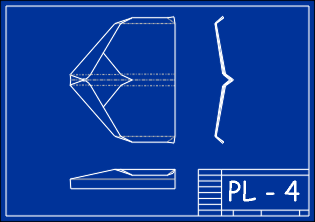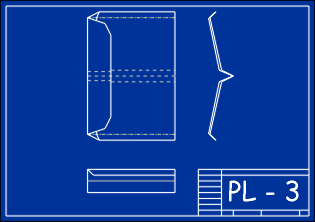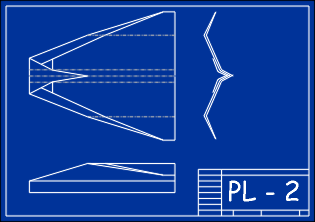
Joseph Palmer's Paper Airplanes

This plane is a mix. It uses the built-up leading edge of PL-2, but is short and wide like PL3. It also likes the outdoors, and needs more room than PL-3.

This design was inspired by Ken Blackburn's world record paper airplane, but it is very different in its design and construction.
This plane takes longer to make, and sometimes even the ones I make seem to not want to fly, but with a little care you can have a plane that is really fun. One more thing, this plane loves the outdoors, and is happiest in a light breeze.

This is a more recent design. It's a variation on PL-1, I added additional folds to the leading edge of the wings to force an airfoil. It's more robust than PL-1 (It does better in crash tests) but isn't quite as stable.
One of the goals on this design was to have every fold referenced to either the paper itself, or to another fold. This plane is a little harder to make, but it will last all afternoon (If you keep it out of puddles.)

I designed this plane over 30 years ago. It's resistant to stalling, and it flies very nicely with just a gentle toss. It's also my first design that uses downward folded winglets - they're not just rudders, or for show, the winglets are there to balance the lift. As an experiment, try flying the plane before you fold them, then try building one with upward turned winglets)
This plane is the easiest to make, and is a lot of fun to fly.
These planes are designed to fly!
They are not meant to be models of real planes, and they are not meant to be pretty display models. (In fact they really fly much better if you don't decorate them!)
Unlike the common schoolyard 'dart' designs, these planes are designed to have lift; if you throw at a point on the ground about 10 feet away — they will fly up.
I've followed a few self-imposed rules in their design.
- The plane must be folded from a single piece of 8 1/2 x 11" paper
- No cutting of the paper is allowed
- No weights may added
- No glue or tape may be used
If you've liked these, please let me know in my Paper Airplane Guestbook.